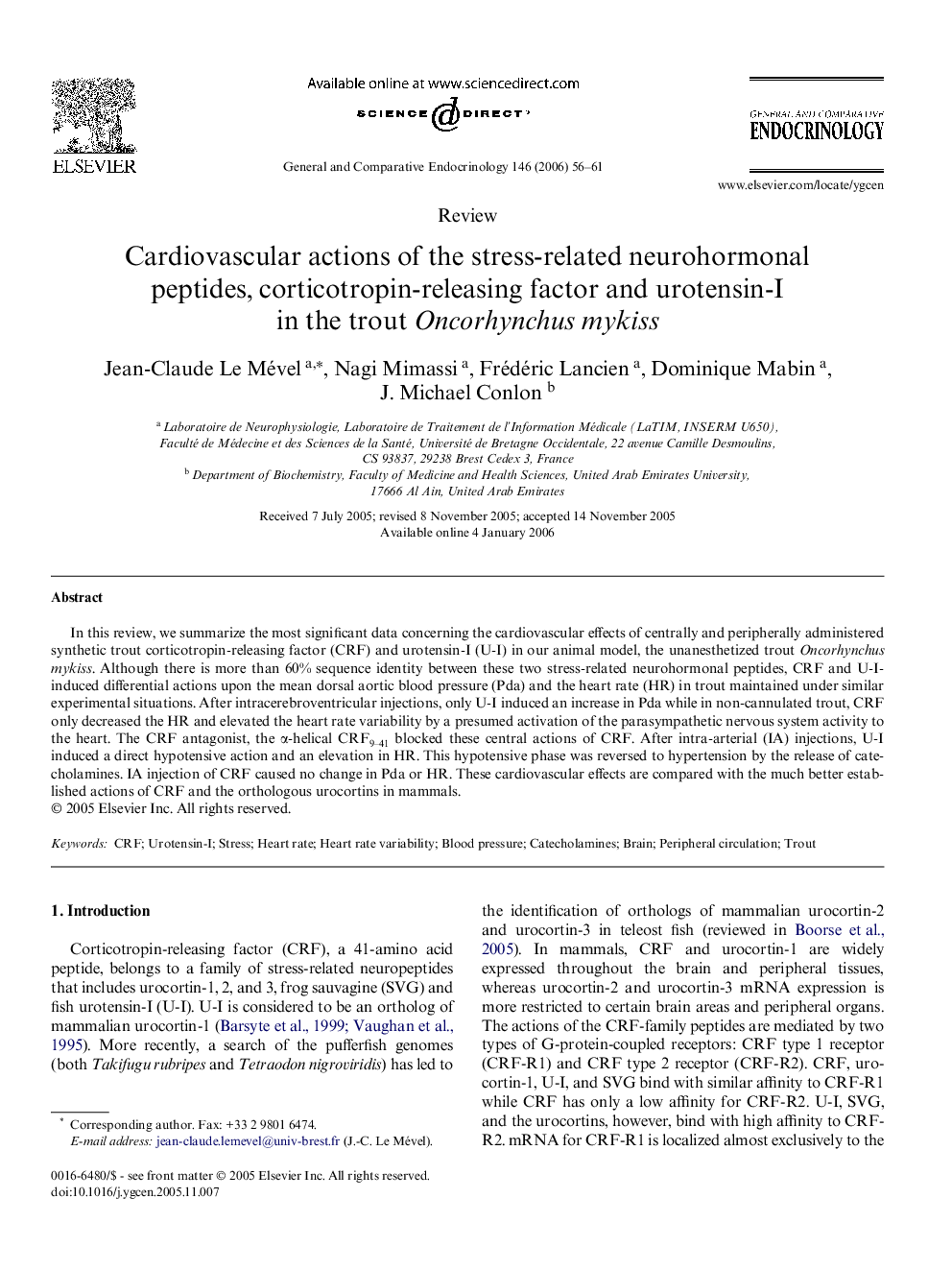| Article ID | Journal | Published Year | Pages | File Type |
|---|---|---|---|---|
| 2802469 | General and Comparative Endocrinology | 2006 | 6 Pages |
In this review, we summarize the most significant data concerning the cardiovascular effects of centrally and peripherally administered synthetic trout corticotropin-releasing factor (CRF) and urotensin-I (U-I) in our animal model, the unanesthetized trout Oncorhynchus mykiss. Although there is more than 60% sequence identity between these two stress-related neurohormonal peptides, CRF and U-I-induced differential actions upon the mean dorsal aortic blood pressure (Pda) and the heart rate (HR) in trout maintained under similar experimental situations. After intracerebroventricular injections, only U-I induced an increase in Pda while in non-cannulated trout, CRF only decreased the HR and elevated the heart rate variability by a presumed activation of the parasympathetic nervous system activity to the heart. The CRF antagonist, the α-helical CRF9–41 blocked these central actions of CRF. After intra-arterial (IA) injections, U-I induced a direct hypotensive action and an elevation in HR. This hypotensive phase was reversed to hypertension by the release of catecholamines. IA injection of CRF caused no change in Pda or HR. These cardiovascular effects are compared with the much better established actions of CRF and the orthologous urocortins in mammals.
